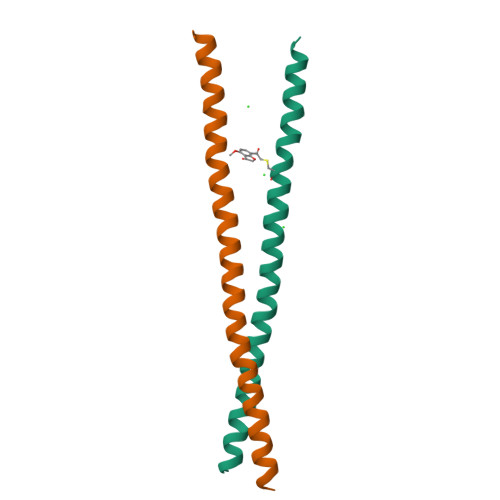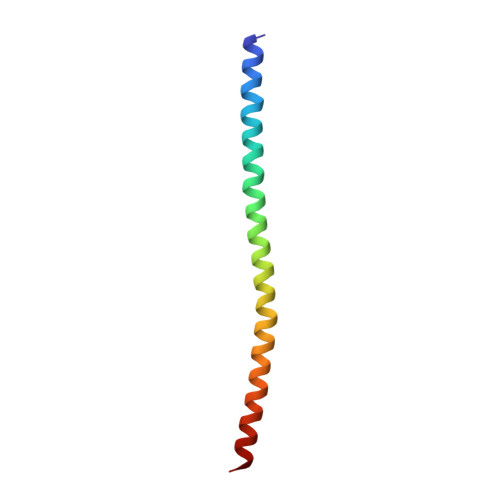Chemically targeting the redox switch in AP1 transcription factor Delta FOSB.
Kumar, A., Aglyamova, G., Yim, Y.Y., Bailey, A.O., Lynch, H.M., Powell, R.T., Nguyen, N.D., Rosenthal, Z., Zhao, W.N., Li, Y., Chen, J., Fan, S., Lee, H., Russell, W.K., Stephan, C., Robison, A.J., Haggarty, S.J., Nestler, E.J., Zhou, J., Machius, M., Rudenko, G.(2022) Nucleic Acids Res 50: 9548-9567
- PubMed: 36039764
- DOI: https://doi.org/10.1093/nar/gkac710
- Primary Citation of Related Structures:
7UCC, 7UCD - PubMed Abstract:
The AP1 transcription factor ΔFOSB, a splice variant of FOSB, accumulates in the brain in response to chronic insults such as exposure to drugs of abuse, depression, Alzheimer's disease and tardive dyskinesias, and mediates subsequent long-term neuroadaptations. ΔFOSB forms heterodimers with other AP1 transcription factors, e.g. JUND, that bind DNA under control of a putative cysteine-based redox switch. Here, we reveal the structural basis of the redox switch by determining a key missing crystal structure in a trio, the ΔFOSB/JUND bZIP domains in the reduced, DNA-free form. Screening a cysteine-focused library containing 3200 thiol-reactive compounds, we identify specific compounds that target the redox switch, validate their activity biochemically and in cell-based assays, and show that they are well tolerated in different cell lines despite their general potential to bind to cysteines covalently. A crystal structure of the ΔFOSB/JUND bZIP domains in complex with a redox-switch-targeting compound reveals a deep compound-binding pocket near the DNA-binding site. We demonstrate that ΔFOSB, and potentially other, related AP1 transcription factors, can be targeted specifically and discriminately by exploiting unique structural features such as the redox switch and the binding partner to modulate biological function despite these proteins previously being thought to be undruggable.
Organizational Affiliation:
Department of Pharmacology and Toxicology, University of Texas Medical Branch, Galveston, TX 77555, USA.





















